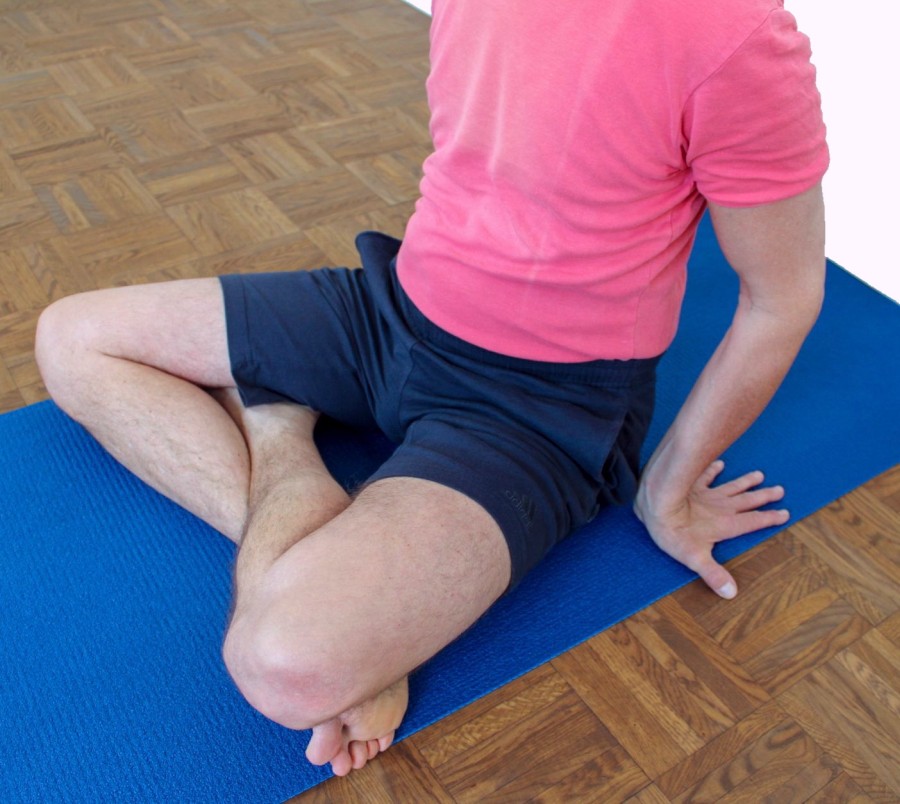yogabook / functional exercises / palmar forearm stretch
Contents
palmar forearm stretch

 instructions and details with working links as PDF for download/print
instructions and details with working links as PDF for download/print
Feedback: We’d love to hear what you think about this description, give us feedback at:
postmeister@yogabook.org
last update: 30.12.2018
Name: Palmar forearm stretch
Level: A
- Classification: A
- Contraindication
- Effects of
- Preparation
- follow-up
- derived asanas
- similar asanas
- diagnostics
- Instruction
- details
- Variants
Classification
classic: functional posture
Contraindication
Effects
- (423) Tone of the finger flexors (finger flexors)
- (352) Strengthening for palmar flexion in the wrist
- (411) Stretching for dorsiflexion in the wrist
- (421) Stretching the finger flexors ( finger flexors)
Preparation
No pre-exercises are given for this unidimensional functional exercise.
Follow-up
derived asanas:
similar asanas:
Diagnostics (No.)
(416) palmar flexors: stretching
This exercise does not differentiate between finger flexors and palmar flexors of the wrist. If it is not possible to press all the finger joints to the floor and then bend the elbow joints significantly, this is due to more or less pronounced shortened palmar flexors of the wrist or flexors of the fingers. The proximal finger joints in particular tend to lift off the floor, i.e. leave the required 180° angle, which indicates a shortening of the superficial finger flexors in particular.
In extensive dorsiflexion and under a certain load, weaknesses of the wrist may become apparent:
- Ganglion, usually in the dorsal region between the hand and forearm, produces a sensation of pressure during dorsiflexion of the wrist
- Tendinitis of the tendons of the palmar flexors or finger flexors
- Carpal tunnel syndrome: worsening of symptoms in this position
- Fractures and fractures of carpal bones, especially the scaphoid bone
- Arthritic changes (degenerative with cartilage atrophy) of the joint
- Arthritis (joint inflammation) of various kinds
- Dislocation / subluxation, which would cause a significantly increased sensation of tension in various muscles covering the hip joint
- Joint trauma, which may cause pain in the joint even after many weeks or months
but also purely muscular symptoms such as
- Shortening/hypertonus of the dorsiflexors of the wrist, leading to a tendency for them to spasm.
- Golfer’s elbow: Strain pain at the point of origin of muscles of the inner ulnar side of the forearm in the transition to the upper arm
Variants:
Instructions
- Sit comfortably on your bottom, e.g. cross-legged.
- Place the fingertips about 10 cm to the side behind the pelvis with the fingers slightly apart and pointing backwards so that the tendons of the middle fingers on the back of the hand point parallel to the back.
- Roll phalanx by phalanx (i.e. first the distal, then the medial and later the proximal fingers) onto the floor, followed by the palm.
- Press each individual phalanx firmly onto the floor.
- Bend the elbow joints straight backwards to the limit of reasonable stretching sensation.
Details
- During the exercise, the proximal finger joints in particular tend to bend again and also lift off the floor. Press all the finger joints of both hands onto the floor with a little force throughout the exercise. It is not enough if it looks as if the finger joints are stretched, they must press on the floor with significant pressure. The finger joints tend to lose pressure, especially when the palm of the hand touches down or the elbow joint is bent. As the muscles to be stretched are polyarticular, stretching in each individual joint is important.
- Bend the elbow joints exactly backwards. Following the anatomical inclination, the elbows would like to move closer to the upper body than corresponds to the straight backward movement. However, this is an evasive movement and correcting it makes this clear in the form of increased stretching sensations.
- Keep the shoulder blades down.
- When the effect of the posture diminishes and further flexion works more on the non-muscular flexibility restrictions in the wrist (in terms of dorsiflexion), continue with the palmar forearm stretch in upavista konasana.
- Distribute the pressure evenly between the inner and outer hand.
